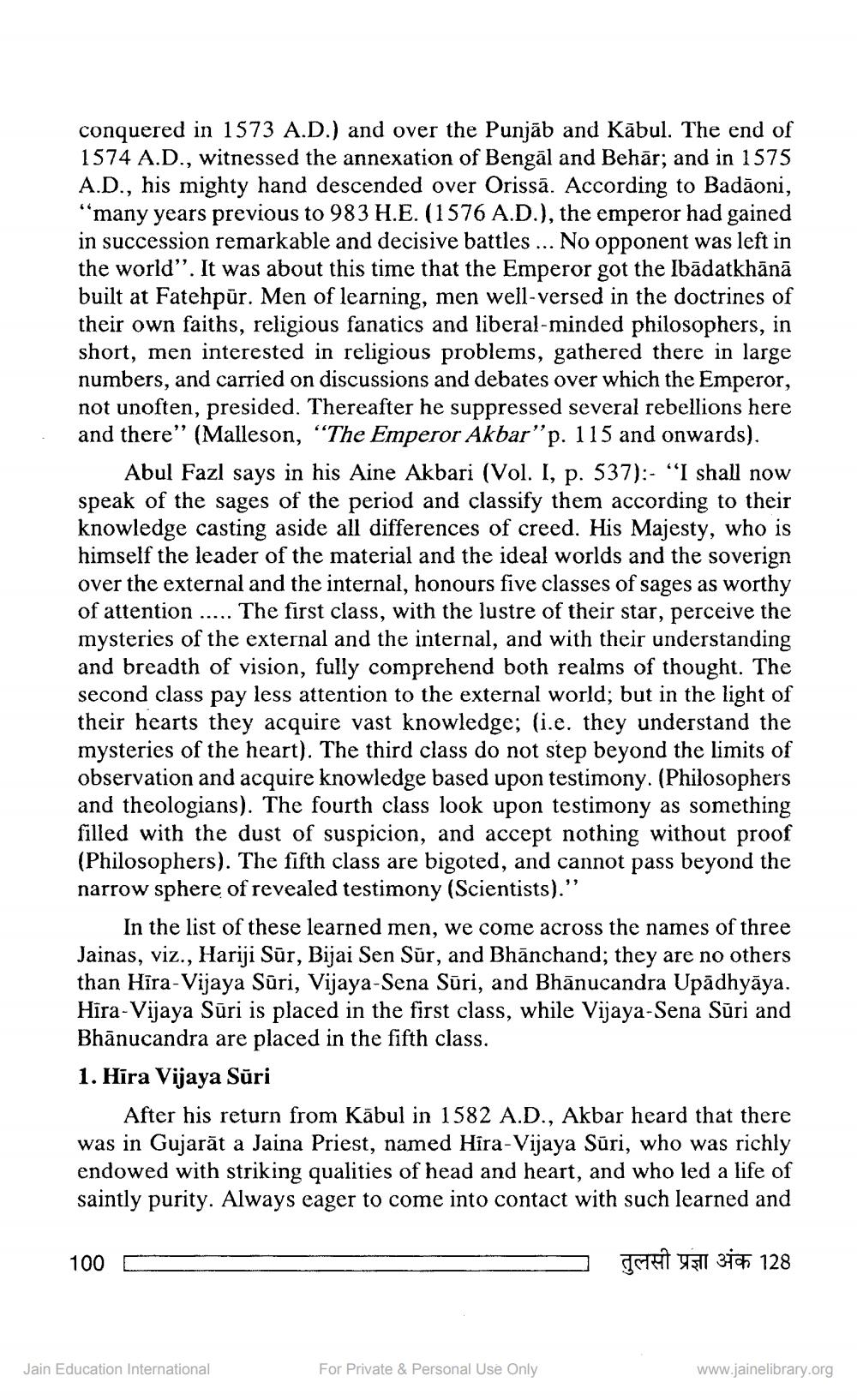________________
conquered in 1573 A.D.) and over the Punjāb and Kābul. The end of 1574 A.D., witnessed the annexation of Bengal and Behār; and in 1575 A.D., his mighty hand descended over Orissa. According to Badāoni, "many years previous to 983 H.E. (1576 A.D.), the emperor had gained in succession remarkable and decisive battles ... No opponent was left in the world". It was about this time that the Emperor got the Ibādatkhānā built at Fatehpur. Men of learning, men well-versed in the doctrines of their own faiths, religious fanatics and liberal-minded philosophers, in short, men interested in religious problems, gathered there in large numbers, and carried on discussions and debates over which the Emperor, not unoften, presided. Thereafter he suppressed several rebellions here and there" (Malleson, “The Emperor Akbar''p. 115 and onwards).
Abul Fazl says in his Aine Akbari (Vol. I, p. 537):- "I shall now speak of the sages of the period and classify them according to their knowledge casting aside all differences of creed. His Majesty, who is himself the leader of the material and the ideal worlds and the soverign over the external and the internal, honours five classes of sages as worthy of attention ..... The first class, with the lustre of their star, perceive the mysteries of the external and the internal, and with their understanding and breadth of vision, fully comprehend both realms of thought. The second class pay less attention to the external world; but in the light of their hearts they acquire vast knowledge; (i.e. they understand the mysteries of the heart). The third class do not step beyond the limits of observation and acquire knowledge based upon testimony. (Philosophers and theologians). The fourth class look upon testimony as something filled with the dust of suspicion, and accept nothing without proof (Philosophers). The fifth class are bigoted, and cannot pass beyond the narrow sphere of revealed testimony (Scientists)."
In the list of these learned men, we come across the names of three Jainas, viz., Hariji Sūr, Bijai Sen Sūr, and Bhānchand; they are no others than Hira-Vijaya Sūri, Vijaya-Sena Sūri, and Bhānucandra Upadhyāya. Hira-Vijaya Sūri is placed in the first class, while Vijaya-Sena Sūri and Bhānucandra are placed in the fifth class. 1. Hira Vijaya Sūri
After his return from Kābul in 1582 A.D., Akbar heard that there was in Gujarāt a Jaina Priest, named Hira-Vijaya Sūri, who was richly endowed with striking qualities of head and heart, and who led a life of saintly purity. Always eager to come into contact with such learned and
100 C
-
The Ull 317 128
Jain Education International
For Private & Personal Use Only
www.jainelibrary.org




